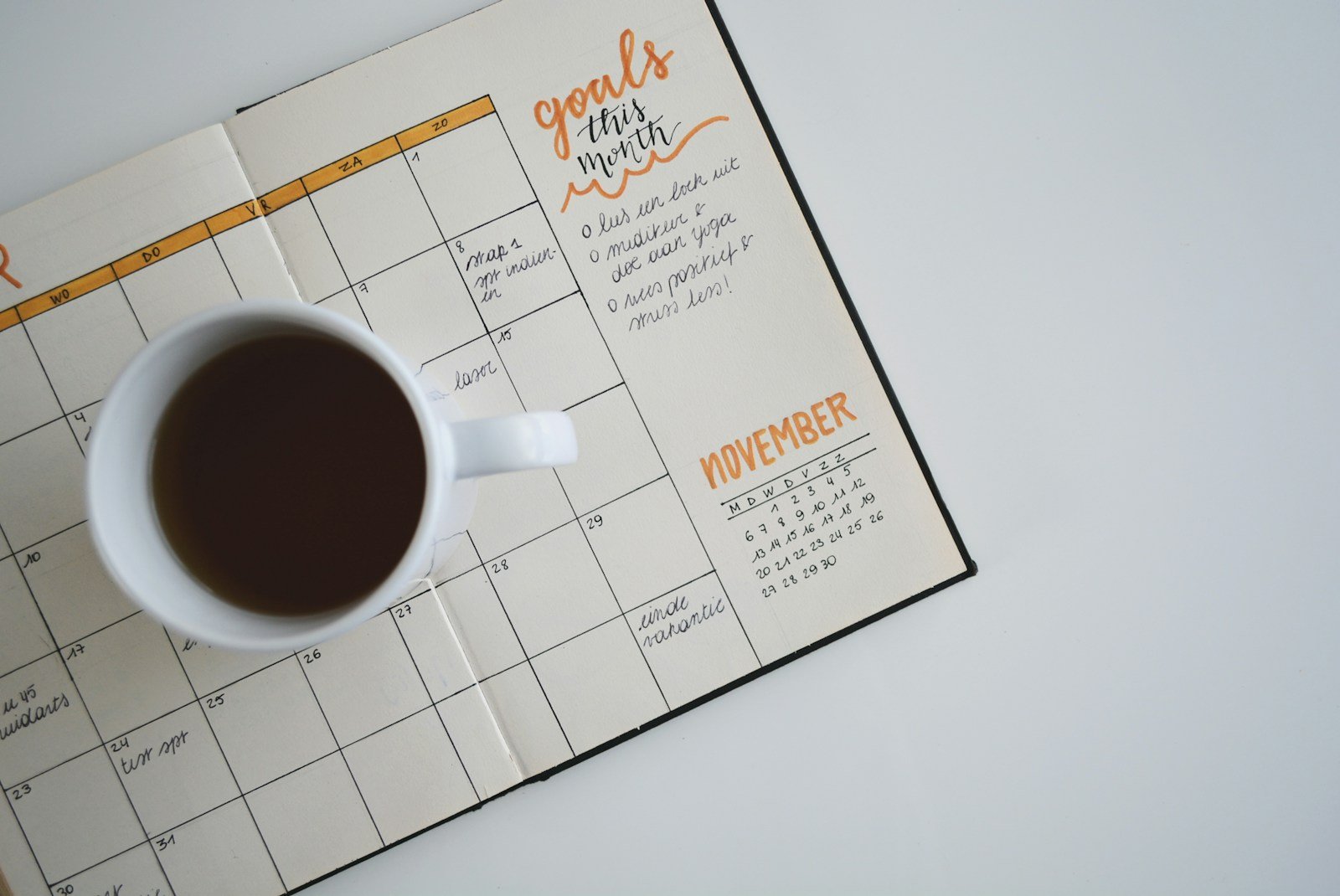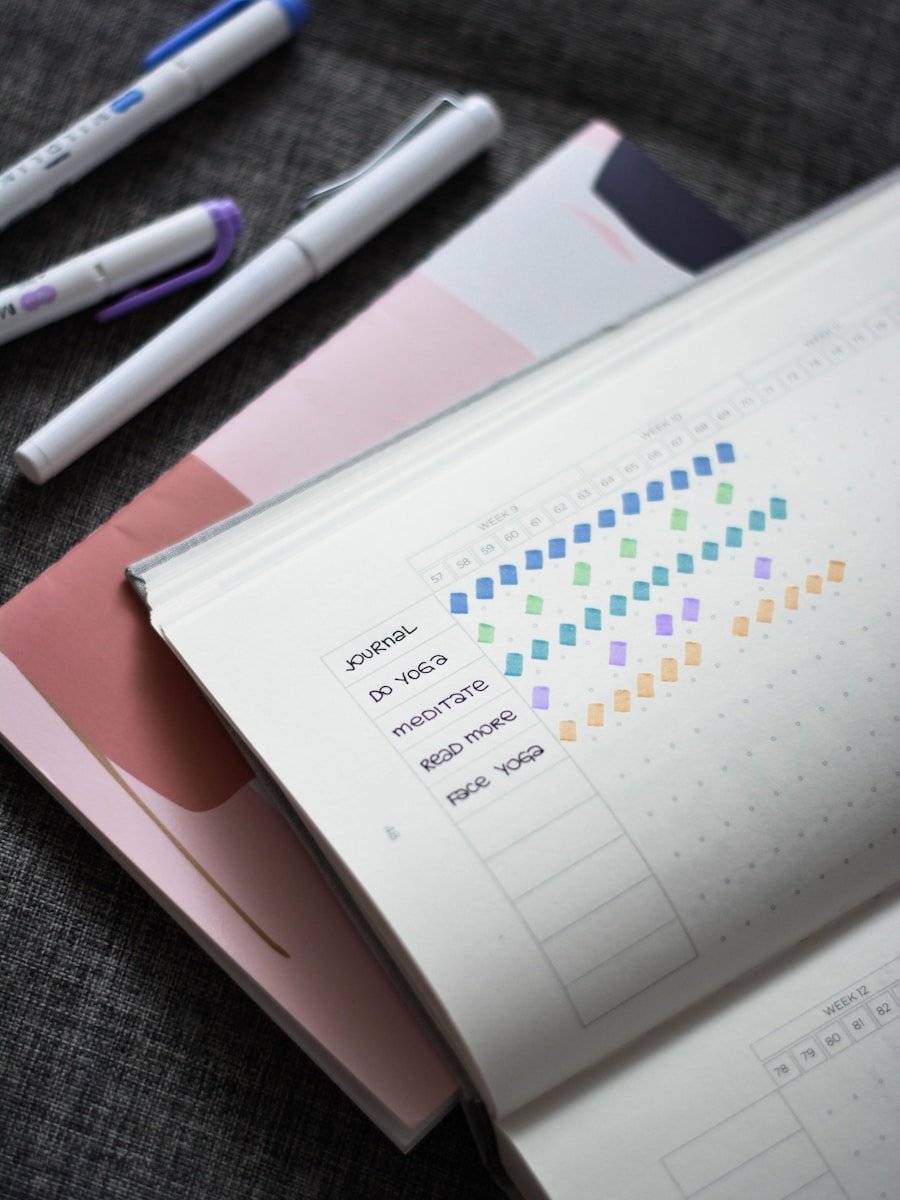1. How can I incorporate physical activity into my daily routine?
Living a sedentary lifestyle can have negative effects on your health and well-being. It’s important to find ways to incorporate physical activity into your daily routine to combat the negative effects of sitting for long periods of time. Here are some tips to help you stay active:
- Start your day with exercise: Set aside some time in the morning to engage in physical activity. This could be a quick workout at home, a jog around the neighborhood, or a visit to the gym.
- Take active breaks: Instead of sitting for long periods of time, take short breaks to move around. Stand up, stretch, or take a quick walk to get your blood flowing.
- Walk or bike to work: If possible, consider walking or biking to work instead of driving or taking public transportation. This will not only help you stay active but also reduce your carbon footprint.
- Use the stairs: Instead of taking the elevator or escalator, opt for the stairs whenever possible. Climbing stairs is a great way to get your heart rate up and engage your leg muscles.
- Join a sports team or fitness class: Find a physical activity that you enjoy and join a sports team or fitness class. This will not only help you stay active but also provide an opportunity to socialize and meet new people.
- Make it a family affair: Involve your family in physical activities. Go for walks or bike rides together, play outdoor games, or participate in sports as a family.
- Set reminders: Use technology to your advantage by setting reminders to move or exercise throughout the day. This can be done through smartphone apps or fitness trackers.
- Make active choices: Look for opportunities to be active in your daily life. Park your car farther away from your destination, take the longer route when walking, or choose to stand instead of sitting whenever possible.
- Track your progress: Keep track of your physical activity to see your progress over time. This can be done through a fitness journal, smartphone app, or wearable device.
By incorporating these tips into your daily routine, you can combat a sedentary lifestyle and improve your overall health and well-being.
2. What are some exercises I can do at home to maintain physical activity?
Staying active doesn’t always require a gym membership or fancy equipment. There are plenty of exercises you can do at home to stay active and maintain a healthy lifestyle. Here are some exercises you can try:
- Bodyweight exercises: Push-ups, squats, lunges, and planks are all great bodyweight exercises that can be done at home. They target multiple muscle groups and help improve strength and endurance.
- Jumping jacks: Jumping jacks are a simple yet effective exercise that gets your heart rate up and engages your whole body. They can be done in a small space and require no equipment.
- Yoga or Pilates: Yoga and Pilates are great options for improving flexibility, balance, and core strength. There are plenty of online resources and videos available to guide you through home practice.
- High-intensity interval training (HIIT): HIIT workouts involve short bursts of intense exercise followed by periods of rest. These workouts are efficient and can be done with minimal equipment, such as a jump rope or resistance bands.
- Dancing: Dancing is a fun and enjoyable way to stay active at home. You can follow along with dance tutorials or simply freestyle.
- Stair exercises: If you have stairs at home, you can incorporate them into your workout routine. Try running up and down the stairs, doing step-ups, or using them for cardio exercises like mountain climbers.
- Resistance band exercises: Resistance bands are affordable and versatile exercise tools that can be used for strength training at home. They come in different resistance levels and can target various muscle groups.
- Jump rope: Jumping rope is a great cardiovascular exercise that can be done indoors. It improves coordination, endurance, and burns calories.
- Chair exercises: If you have limited mobility or need a seated workout option, chair exercises are a great choice. They can help improve strength, flexibility, and balance.
- Stretching: Don’t forget the importance of stretching. Incorporate stretching exercises into your daily routine to improve flexibility and prevent muscle tightness.
Remember to listen to your body and start with exercises that are suitable for your fitness level. Gradually increase the intensity and duration of your workouts as you progress.
3. How can I stay active while working a desk job?
Working a desk job often involves long hours of sitting, which can negatively impact your health. However, there are several strategies you can implement to stay active while working a desk job:
- Take regular breaks: Set reminders to take short breaks throughout the day. Use these breaks to stand up, stretch, or take a quick walk around the office.
- Use a standing desk: Consider using a standing desk or adjustable desk that allows you to switch between sitting and standing positions. Standing while working can help reduce the amount of time spent sitting.
- Incorporate movement into your work routine: Look for opportunities to move while working. For example, you can stand up during phone calls, walk to a colleague’s desk instead of sending an email, or use a stability ball as a chair to engage your core muscles.
- Join a lunchtime fitness class: Many workplaces offer lunchtime fitness classes or have on-site gyms. Take advantage of these opportunities to stay active during your lunch break. Like we mentioned before about fitness classes, this may introduce you to new people as well.
- Take the stairs: Instead of taking the elevator, opt for the stairs whenever possible. Climbing stairs is a great way to get your heart rate up and engage your leg muscles.
- Stretch at your desk: Incorporate stretching exercises into your work routine. Stretch your neck, shoulders, wrists, and legs to relieve tension and improve flexibility. We talked about stretching before but it’s incredibly important no matter where you are.
- Use a pedometer or fitness tracker: Track your steps and set goals for daily physical activity. Aim to reach a certain number of steps each day and find ways to increase your activity level.
- Stay hydrated: Drinking plenty of water throughout the day will not only keep you hydrated but also encourage you to take more frequent bathroom breaks, which of course involve movement.
By implementing these strategies, you can stay active and combat the negative effects of a sedentary desk job.

4. What are the health risks of a sedentary lifestyle?
Leading a sedentary lifestyle, characterized by prolonged sitting or physical inactivity, can have serious health risks. Here are some of the health risks associated with a sedentary lifestyle:
- Increased risk of obesity: Sitting for long periods of time can contribute to weight gain and obesity. Lack of physical activity leads to a decrease in calorie expenditure, which can result in an energy imbalance and weight gain.
- Higher risk of heart disease: Sedentary behavior is associated with an increased risk of heart disease. Lack of physical activity can lead to high blood pressure, high cholesterol levels, and an increased risk of developing cardiovascular problems.
- Greater risk of type 2 diabetes: A sedentary lifestyle is a major risk factor for developing type 2 diabetes. Physical inactivity can impair insulin sensitivity and lead to insulin resistance, increasing the risk of developing diabetes.
- Increased risk of certain cancers: Studies have shown that prolonged sitting and physical inactivity are associated with an increased risk of certain types of cancer, including colon, breast, and endometrial cancer.
- Muscle and bone problems: Lack of physical activity can lead to muscle weakness, loss of muscle mass, and decreased bone density. This increases the risk of falls, fractures, and osteoporosis.
- Mental health issues: Sedentary behavior has been linked to an increased risk of mental health issues such as depression and anxiety. Regular physical activity has been shown to improve mood and reduce symptoms of depression.
- Reduced lifespan: Studies have found that a sedentary lifestyle is associated with a shorter lifespan. Lack of physical activity is a significant risk factor for premature death.
- Decreased productivity and cognitive function: Prolonged sitting and physical inactivity can negatively impact cognitive function and productivity. Regular physical activity has been shown to improve cognitive function, memory, and concentration.
No, the list doesn’t end there…
- Weakened immune system: Physical activity plays a crucial role in maintaining a healthy immune system. A sedentary lifestyle can weaken the immune system, making you more susceptible to illnesses and infections.
- Impaired digestion: Lack of physical activity can lead to slower digestion and constipation. Regular movement helps stimulate the digestive system and promotes healthy bowel movements.
- Poor sleep quality: Sedentary behavior has been linked to poor sleep quality. Lack of physical activity can disrupt your sleep patterns and make it harder to fall asleep or stay asleep throughout the night
- Increased risk of blood clots: Sitting for extended periods can increase the risk of blood clots, known as deep vein thrombosis (DVT). When you sit for long periods, blood flow slows down, increasing the risk of blood clots forming in the legs.
- Increased risk of back pain: Sedentary behavior, such as sitting for long periods, can contribute to back pain. Lack of movement and poor posture can lead to muscle imbalances and strain on the spine, resulting in back pain and discomfort.
It’s important to note that even if you engage in regular exercise, prolonged periods of sitting can still have negative health effects. It’s essential to incorporate movement and physical activity throughout the day to counteract the risks associated with a sedentary lifestyle.
5. How can I stay motivated to maintain an active lifestyle?
Maintaining an active lifestyle requires motivation and dedication. Here are some tips to help you stay motivated:
- Setting goals: Set achievable goals that align with your interests and abilities. Start small and gradually increase the intensity and duration of your physical activity.
- Find activities you enjoy: Choose activities that you genuinely enjoy. Whether it’s playing a sport, dancing, hiking, or swimming, finding activities that you look forward to will make it easier to stay motivated.
- Vary your routine: Avoid getting bored by incorporating a variety of activities into your routine. Try new exercises, join different fitness classes, or explore outdoor activities to keep things interesting.
- Track your progress: Keep track of your physical activity and progress. Use a fitness journal, smartphone app, or wearable device to monitor your workouts, steps, or other metrics that are important to you.
- Reward yourself: Set rewards for reaching your fitness goals. Treat yourself to something you enjoy, such as a massage, a new workout outfit, or a healthy meal at your favorite restaurant.
- Find an accountability partner: Partner up with a friend or family member who shares your goal of staying active. Having someone to exercise with and hold you accountable can boost motivation and make the process more enjoyable.
- Join a community or group: Just like fitness classes, joining a fitness community or group can provide support, encouragement, and a sense of belonging. Whether it’s a running club, a sports team, or an online fitness group, connecting with others who have similar goals can help you stay motivated.
- Focus on the benefits: Remind yourself of the numerous benefits of staying active. Regular physical activity improves physical and mental health, boosts energy levels, reduces stress, and enhances overall well-being.
- Create a schedule: Plan your physical activity in advance and treat it as an important appointment. Schedule your workouts or active breaks into your daily or weekly routine to ensure they become a priority.
- Be kind to yourself: Don’t be too hard on yourself if you miss a workout or have a setback. Remember that maintaining an active lifestyle is a long-term commitment, and it’s normal to have ups and downs. Be kind to yourself and focus on getting back on track.
By implementing these strategies, you can stay motivated and make an active lifestyle a sustainable part of your daily routine.
6. How can I make physical activity a priority in my busy schedule?
Leading a busy lifestyle can make it challenging to prioritize physical activity. However, with some planning and commitment, you can make it a priority. Here are some tips:
- Schedule it in: Treat physical activity as an essential part of your schedule. Block out specific times for exercise or active breaks in your calendar, just like you would for any other important appointment.
- Wake up earlier: Consider waking up earlier to fit in a workout or physical activity before your day gets busy. This can help you start the day on a positive note and ensure that exercise doesn’t get pushed aside later.
- Combine it with other activities: Look for opportunities to combine physical activity with other tasks. For example, you can listen to an audiobook or podcast while going for a walk, or do bodyweight exercises while watching TV.
- Break it up: If finding a large chunk of time for exercise is challenging, break it up into smaller sessions throughout the day. Even short bursts of physical activity can be beneficial. For example, you can do a 10-minute workout in the morning, take a walk during your lunch break, and do some stretching in the evening.
- Maximize your lunch break: Just like at work, always use your lunch break as an opportunity to be active. Go for a walk, do a quick workout, or join a nearby fitness class. This can help you break up the sedentary nature of your workday and boost your energy levels.
- Delegate and outsource: If your schedule is extremely busy, consider delegating or outsourcing certain tasks to free up time for physical activity. This could involve hiring a cleaner, ordering groceries online, or asking for help with childcare responsibilities.
- Set boundaries: Learn to set boundaries and prioritize your well-being. Say no to activities or commitments that don’t align with your goal of staying active. Remember that taking care of your health is essential for your overall productivity and happiness.
- Stay committed: Stay committed to your goal of making physical activity a priority. Remind yourself of the benefits and the positive impact it has on your physical and mental well-being. Celebrate your successes and keep pushing forward.
By implementing these strategies and making physical activity a non-negotiable part of your busy schedule, you can prioritize your health and well-being.
Table Summary
| Question | Summary |
|---|---|
| How can I incorporate physical activity into my daily routine? | Start your day with exercise, take active breaks, walk or bike to work, use the stairs, join a sports team or fitness class, make it a family affair, set reminders, make active choices, find an accountability partner, track your progress. |
| What are some exercises I can do at home to stay active? | Bodyweight exercises, jumping jacks, yoga or Pilates, high-intensity interval training (HIIT), dancing, stair exercises, resistance band exercises, jump rope, chair exercises, stretching. |
| How can I stay active while working a desk job? | Take regular breaks, use a standing desk, incorporate movement into your work routine, use active transportation, join a lunchtime fitness class, take the stairs, stretch at your desk, use a pedometer or fitness tracker, stay hydrated, find a workout buddy. |
| What are the health risks of a sedentary lifestyle? | Increased risk of obesity, higher risk of heart disease, greater risk of type 2 diabetes, increased risk of certain cancers, muscle and bone problems, mental health issues, reduced lifespan, decreased productivity and cognitive function, increased risk of back pain, increased risk of blood clots, weakened immune system, impaired digestion, poor sleep quality. |
| How can I stay motivated to maintain an active lifestyle? | Set realistic goals, find activities you enjoy, vary your routine, track your progress, reward yourself, find an accountability partner, join a community or group, focus on the benefits, create a schedule, be kind to yourself. |
| How can I make physical activity a priority in my busy schedule? | Schedule it in, wake up earlier, combine it with other activities, break it up, make it a family affair, maximize your lunch break, utilize technology, delegate and outsource, set boundaries, stay committed. |
Conclusion
Combating a sedentary lifestyle is crucial for maintaining good health and well-being. By incorporating physical activity into your daily routine, whether through exercise, active breaks, or active transportation, you can counteract the negative effects of prolonged sitting. It’s important to find activities that you enjoy and make them a priority in your busy schedule. Staying motivated and setting realistic goals can help you maintain an active lifestyle in the long term. Remember to listen to your body, track your progress, and seek support from accountability partners or fitness communities. Additionally, being aware of the health risks associated with a sedentary lifestyle can serve as a reminder of the importance of staying active. By making physical activity a non-negotiable part of your daily routine and finding ways to incorporate movement throughout the day, you can improve your overall health, reduce the risk of chronic diseases, and enhance your quality of life.







